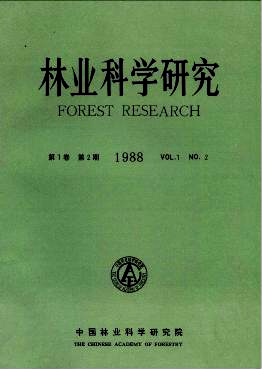DEVELOPMENT OF POLLEN AND EMBRYO SAC IN POPULUS EUPHRATICA OLIV.
- Received Date: 1987-12-23
- Available Online: 2012-12-04
Abstract: Development of pollen and embryo sac in Populus euphratica Oliv. were observed in brightfield and fluorescence microscopes, and scanning electron microscope. The resultus are as follows.The anther is tetrasporangiate. The mature anther wall comprises an epidermis, a layer of endothecium, 2 middle layers, and a single-layered tapetum. The epidermis is persistant. The endothecium develops fibrous thickenings. One of the middle layer becomes flattened and crushed by the uninucleate pollen stage, and the other may delay its disintegration until prior to the dehiscence of the anther. Glandar tapetum, the tapetal cell is uninucleate at the early stage and becomes binucleate at PMC (pollen mother cell) meiotic stage. The Ubisch bodies are studded on its inner tangential walls, manifesting bright green, auramine orange induced fluorescence. SEM micrograph shows "bridge" between the Ubisch body and the exine of pollen grain. The meiotic division does not exhibit a high degree of synchrony. It may be asynchronous within a pollen sac or in two different pollen sacs of the same anther. Simultaneous cytokinesis in the PMCs follows meiosis and the majority of microspore tetrads are tetrahedral and rarely isobilateral.The deposition of callose during microsporogenesis starts at the corner of the PMCs and extends gradually to enveloping PMC by metaphase I, reaches its peak by metaphase Ⅱ, and separates the microspore tetrads along cellular plates. Subsequently, prior to the spore release, the callosic envelop begins to dissolve, and then the callosic cellular plates appear. Pollen grains are 2-celled at shedding stage.The ovule is anatropus, bitegmic at MMC (megaspore mother cell) stage, and the inner integument is arrested in development and becomes unitegmic by the time of megasporogenesis. The nucellus is crassinucellar, containing usually one but sometimes two MMCs. Cytokinesis in the MMC accompanies meiosis and the megaspore tetrads are linear or T-shaped. Callose appears in the transverse walls (linear type) or in the transerve and vertical walls (T-shaped type) formed after each meiotic division but never appears in the side walls (outer walls). The chalazal or subchalazal megaspore is functional, which develops into a Polygonum type embryo sac.Generally, the mature embryo sac comprises a 3-celled egg apparatus, 3 antipodal cells and a central cell with the secondary nucleus. Occasionally, the polar nuclei remain distinct even though the sperm has adhered to one of them. Owing to the degeneration of the nucellus at the micropyle pole during megagametogenesis, the egg apparatus pole of the mature embryo sac directly contacts with the integument and more or less penetrates into the micropyle.





 DownLoad:
DownLoad: